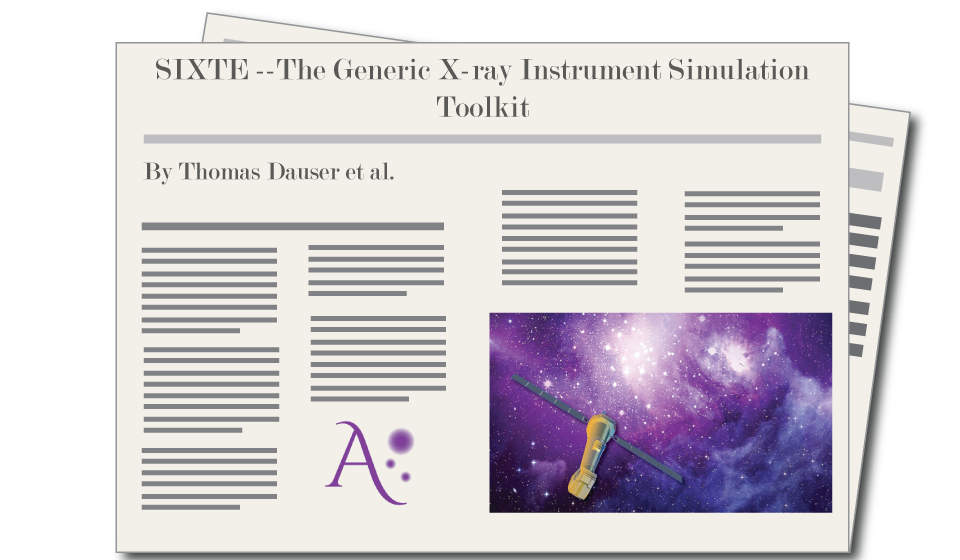
SIXTE -- The Generic X-ray Instrument Simulation Toolkit

By Thomas Dauser
We give an overview of the SImulation of X-ray TElescopes (SIXTE) software package, a generic, mission-independent Monte Carlo simulation toolkit for X-ray astronomical instrumentation. The package is based on a modular approach for the source definition, the description of the optics, and the detector type such that new missions can be easily implemented. The targets to be simulated are stored in a flexible input format called SIMPUT. Based on this source definition, a sample of photons is produced and then propagated through the optics. In order to model the detection process, the software toolkit contains modules for various detector types, ranging from proportional counter and Si-based detectors, to more complex descriptions like transition edge sensor (TES) devices. The implementation of characteristic detector effects and a detailed modeling of the read-out process allow for representative simulations and therefore enable the analysis of characteristic features, such as for example pile-up, and their impact on observations. We present an overview of the implementation of SIXTE from the input source, the imaging, and the detection process, highlighting the modular approach taken by the SIXTE software package. In order to demonstrate the capabilities of the simulation software, we present a selection of representative applications, including the all-sky survey of eROSITA and a study of pile-up effects comparing the currently operating XMM-Newton with the planned Athena-WFI instrument. A simulation of a galaxy cluster with the Athena- X-IFU shows the capability of SIXTE to predict the expected performance of an observation for a complex source with a spatially varying spectrum and our current knowledge of the future instrument.

